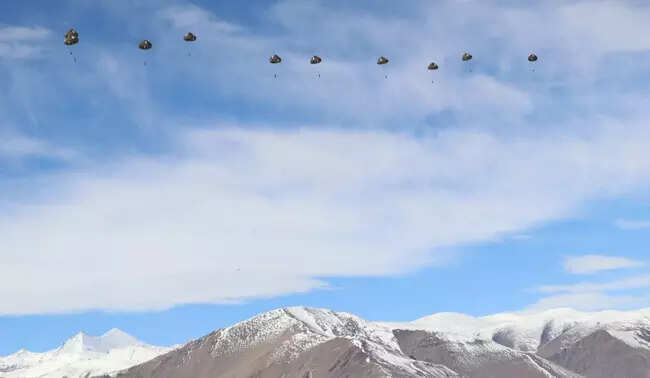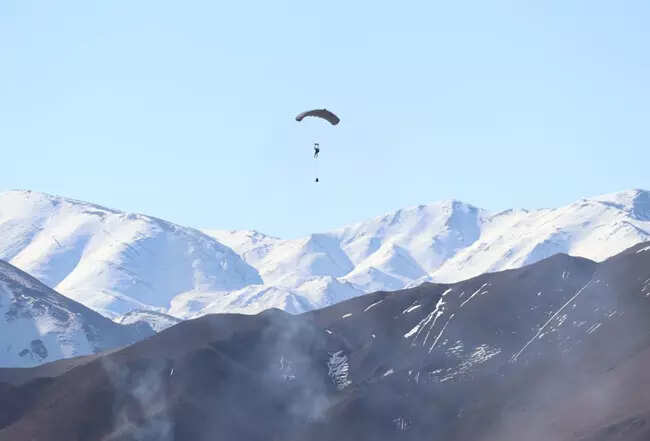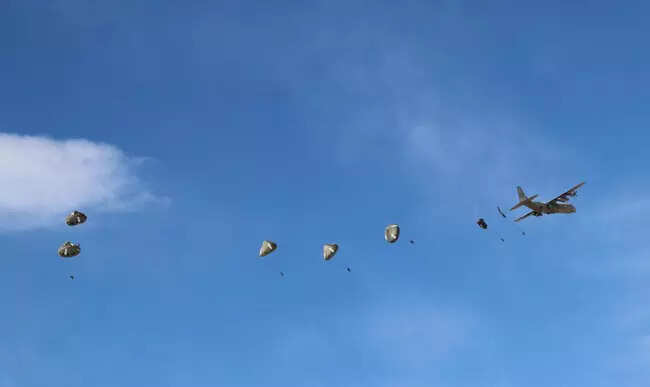The three-day exercise, with hundreds of pre-suited troops and heavy weapon systems over 14,000-feet and minus 20 degrees Celsius, is meant to send another “clear message” to China after the Agni-V missile. Sources said last week to conduct the test to “avoid any misadventures along the northern borders”.

The maneuver comes amid an ongoing standoff in an 18-month-long military confrontation in eastern Ladakh, with China refusing to complete even a contingent stalled at Patrolling Point-15 in the Hot Springs-Gogra-Kongka La area in the 13th round. done. Corps Commander level talks on October 10
With any de-escalation in charding a more difficult face-off ninglung nalahi (CNN) Track junction and strategically located Depsang ground in Demchok are also not on the horizon, with India and China deploying their 50,000 troops for the second consecutive time along with tanks, howitzers and surface-to-air missile systems. are ready for Winters in harsh high altitude region.

“If they (People’s Liberation Army) are there to stay, then we are also there to stay,” Army Chief Gen. MM Naravane Said recently. The PLA is also flexing its muscles by conducting integrated joint operations exercises in the Tibetan Autonomous Region along the 3,488-km-long LAC stretching from eastern Ladakh to Arunachal Pradesh.
The Indian exercise began on Monday with over 200 Para-Special Forces troops from the Agra-based Shatrujit Brigade, along with specialist vehicles, missile contingents and other heavy loads being put into the “drop zone” by C-130J Super in eastern Ladakh. Hercules and AN-32 aircraft from five different “mounting bases” in the country.
“The objective was to have rapid response capabilities, inter-theatre moves, precise stand-off drops, rapid grouping and capture of specified objectives with speed and surprise. The super high-altitude terrain resulted in sub-zero temperatures and rarefied air due to the atmosphere. The -drop was particularly challenging,” said a source.

Over the next two days, paratroopers would “hold” the captured area in simulated exercises, while enemy tanks would be neutralized by attack helicopters such as the newly inducted Apache. The “friendly” main battle tanks and infantry combat vehicles, in turn, would move to engage with paratroopers sitting on the ground to complete the maneuver.
“The exercise includes oxygenated combat free-fall jumps and integrated warfare exercises with coordinated integration by airborne forces, mechanized columns and attack helicopters,” the source said.
From Bofors, M-777 and K-9 Vajra artillery guns to T-90S and T-72 main-battle tanks, Smerch and majority of Multiple-launch rocket systems and BrahMos supersonic cruise missiles along the LAC since the collision in April-May last year.
Similarly, the IAF has also deployed Apache attack and Chinook heavy-lift helicopters along with Sukhoi-30MKI, Mirage-2000, MiG-29 and Jaguar fighter jets in Ladakh and along the LAC.
Although India lags behind China in developing border infrastructure and last mile military connectivity, building additional roads, ammunition shelters, bridges and tunnels in forward areas is also a top priority area for the Border Roads Organization during the crisis. Used to be.
.